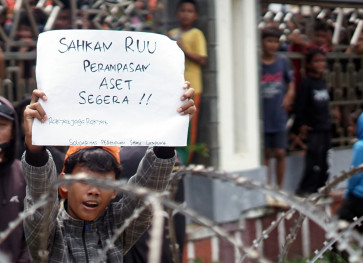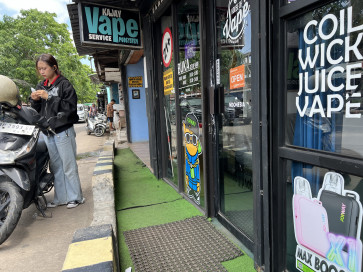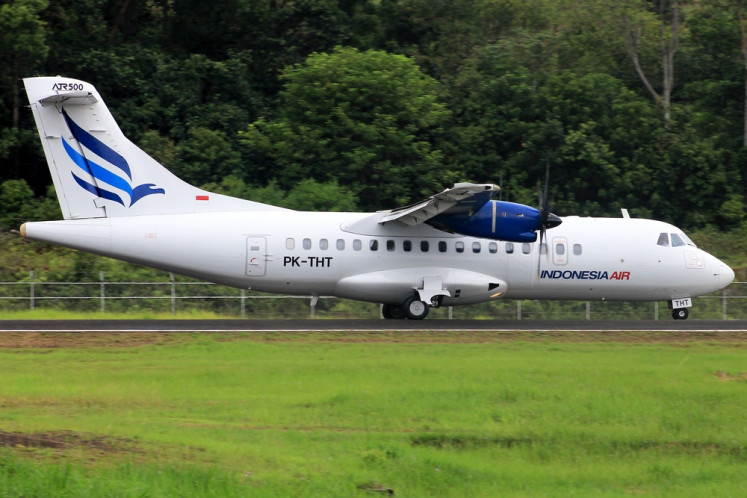Popular Reads
Top Results
Can't find what you're looking for?
View all search resultsPopular Reads
Top Results
Can't find what you're looking for?
View all search resultsAustralia's new maritime area
Australia has just been confirmed by the United Nations for its maritime extension
Change text size
Gift Premium Articles
to Anyone
Australia has just been confirmed by the United Nations for its maritime extension. Almost all Australian media released news concerning the extension and some even wrote provocative headlines. The Australian (April 21), for example, stated "Australia expands into new territory". Is it territory that Australia expands?
The term "territory" here did not refer to land territory. In fact, the use of the word "territory" here is inappropriate since the extension concerns the maritime area beyond 12 nautical miles (M) from baseline (coastline). Australia, in fact, has not expanded its territory in terms of sovereignty but maritime jurisdiction (continental shelf or seabed) in the sense of sovereign rights. While for sovereignty a coastal state exercises full control over a certain area, for sovereign rights such coastal states do not have full control but merely utilize resources with particular responsibilities.
A coastal state, like Australia, may claim several maritime jurisdictions measured from its baseline, including territorial sea (12 M, where 1 M = 1.853 km), contiguous zone (24 M), exclusive economic zone (200 M) and continental shelf. Article 76 of the United Nations Convention on the Law of the Sea, (the Convention) states that the continental shelf of a coastal state may extend to the outer limit of its continental margin or up to a distance of 200 M from its baseline, in case the continental margin does not reach such distance (200 M).
Furthermore, a coastal state may also extend its continental shelf beyond 200 M from baseline, which is known as extended continental shelf (ECS). For this purpose, such a coastal state should delineate the outer limits of its "new" continental shelf and submit it to the UN Commission on the Limits of the Continental Shelf (the Commission).
Two technical criteria are involved: the use of sedimentary rock formula and distance formula. The outer limit of the ECS is the line delineating points on the seabed with 1 percent sedimentary rock thickness. Second, the coastal state may also use a line with a distance of 60 M from the foot of its continental slope. A combination of the two criteria may be used.
This procedure is by no mean easy. It requires integration of technical disciplines such as geodesy, geophysics, hydrography and geology. The process involves bathymetric surveys for seabed profiling and seismic surveys for the determination of sedimentary rock thickness.
In addition, Article 76 of the Convention also governs that the outer limits of the ECS should satisfy two other constraints. First, the outer limits of the ECS should not be beyond 350 M from baseline. Second, as an alternative, the outer limits should not exceed a line of 2500 m isobath (depth) + 100 M seaward. Similar to the above criteria, these two constraints can also be combined.
It is understandable that this procedure of delineating outer limits or the ECS is not easy to understand. However, it should be clear that the process is truly complicated and does require a lot of resources to accomplish.
After an approximately 15-year project, Australia submitted its ECS on Nov. 15, 2004, for 10 different locations.
How about Indonesia?
Similar to Australia, Indonesia is also entitled to ECS. At the time of writing, Indonesia has not yet submitted its ECS to the Commission, while it has only one year to go, until May 13, 2009. However, serious efforts have been conducted. News released by the National Coordinating Agency for Surveys and Mapping revealed that Indonesia is ready to submit its ECS for the area to the west of Aceh. The area approximately equals the size of Madura Island.
Regardless of its potentials, delineation of the ECS is debatable. Some keep questioning whether benefit obtained will be worth the trouble. For the Indonesian case, some might opine that the extension is not urgent, considering that Indonesia is currently facing many other problems (food shortages, natural disasters, health issues, education, etc.) Resources should therefore be spent for these vital matters, instead of for a continental shelf extension.
The government should not carelessly spend a lot of money for something that may have little prospect of succeeding or benefiting the nation. However, the ECS is a future investment. It is not only a matter of economy and how ocean resources can be exploited from the continental shelf, but also the legal existence and sovereign rights of Indonesia as a maritime nation.
The writer is a lecturer in the Department of Geodesy and Geomatics, Gadjah Mada University, Yogyakarta. He is currently an Australian Leadership Award Scholar (PhD candidate) at the University of Wollongong. This is his personal opinion.










